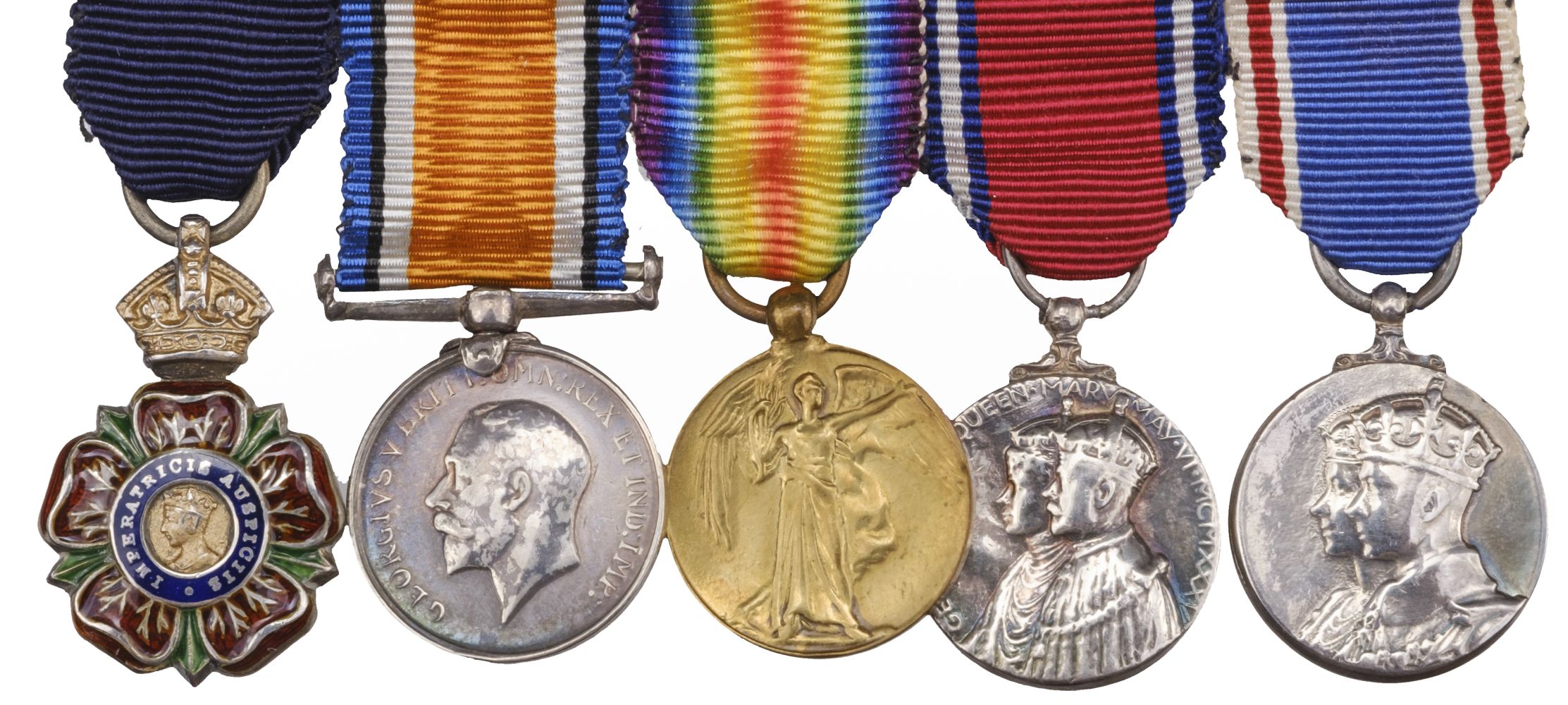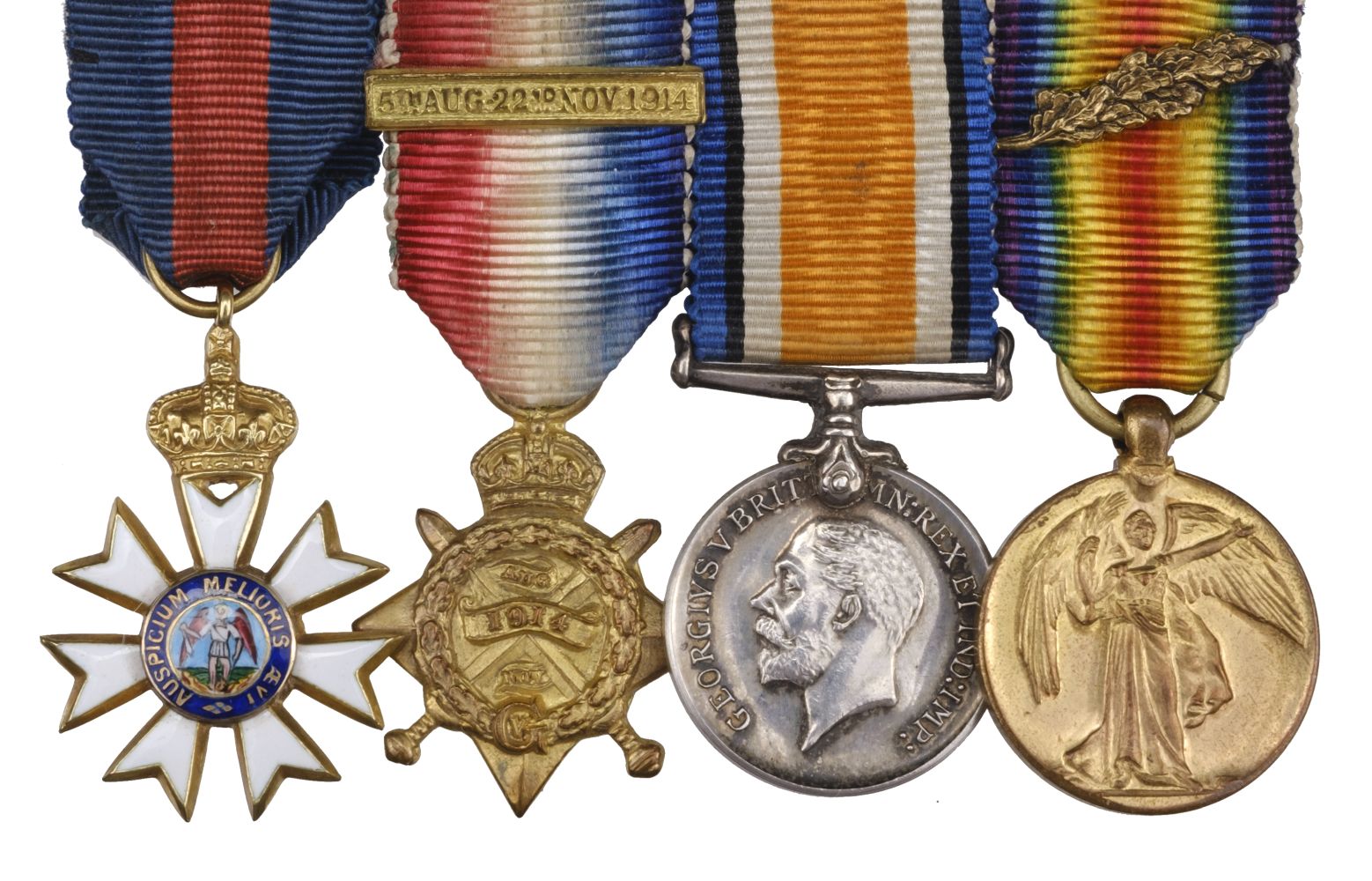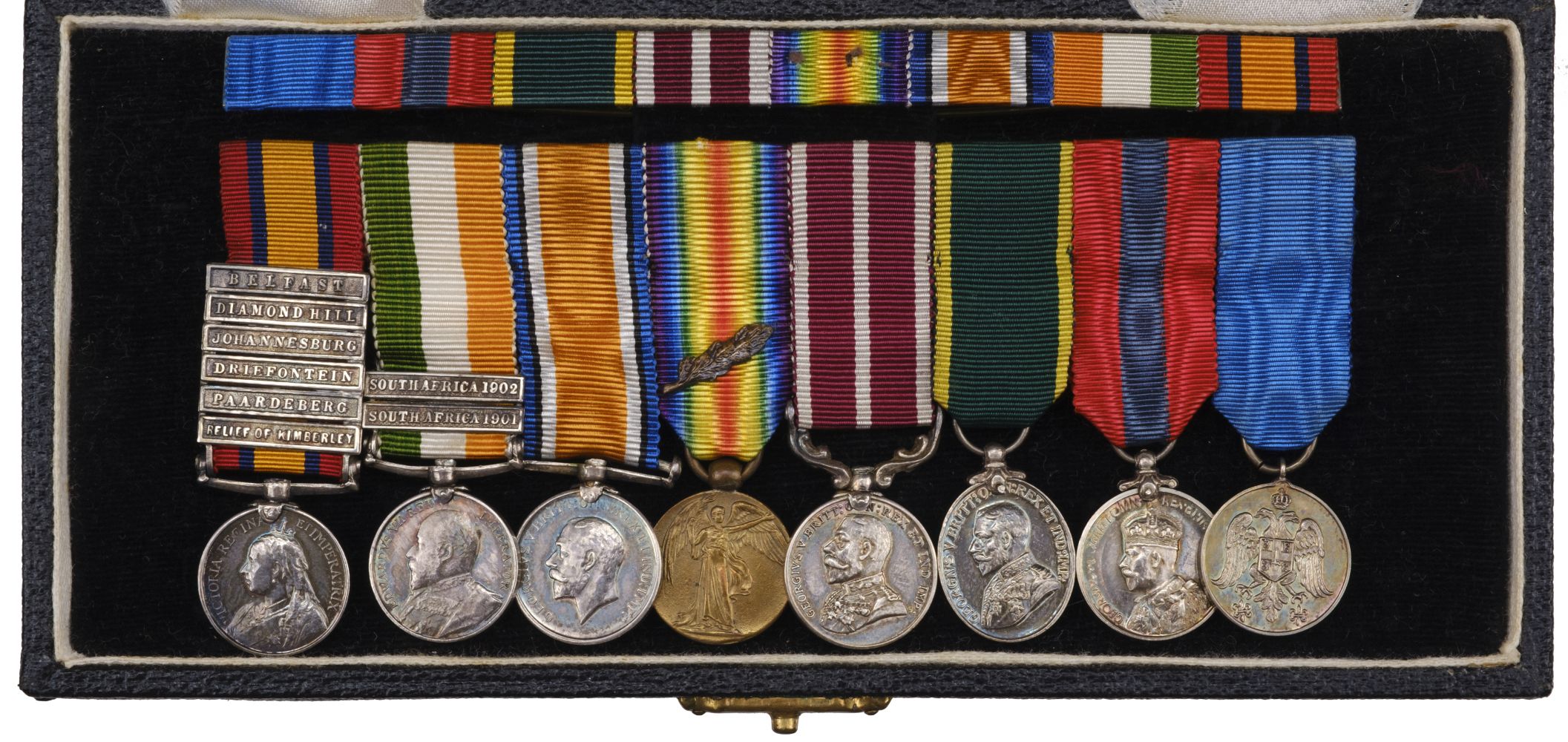An impressive group of eleven miniature dress medals attributed to Major General Sir E. Swinton, K.B.E., C.B., D.S.O., who played a part in the development and adoption of the tank during WWI. He was also a war correspondent and author of several short stories on military themes. Swinton is credited with having initiated the use of the word "tank" as a code-name for the first tracked armoured fighting vehicles a) The Most Excellent Order of the British Empire, K.B.E. (Civil) Knight Commander’s 1st type badge, silver-gilt and enamel b) The Most Honourable Order of the Bath, Civil Division, silver-gilt c) Distinguished Service Order, V.R., silver-gilt and enamel d) Queen's South Africa Medal 1899-1902, 3 clasps, Cape Colony, Orange Free State, Transvaal e) King's South Africa Medal 1901-02, 2 clasps f) 1914 Star and bar g) British War and Victory Medals with M.I.D. oakleaves h) Jubilee Medal 1935 i) Coronation Medal 1937 j) France, Legion of Honour with rosette, very fine or better, swing mounted as worn, with research (Quantity: 11) Sir Ernest Dunlop Swinton (1868-1951) was born in Bangalore and was educated at Rugby and Cheltenham College. He was commissioned 2nd Lieutenant in the Royal Engineers in 1881 advancing to Major in 1906. He received his D.S.O. for the Boer War in September 1901 for his input into Railway Construction. Swinton was appointed war correspondent on the Western Front by Lord Kitchener. Journalists were not allowed on the front and Swinton’s reports were censored which caused much controversy. Swinton is best known for the development of tanks. According to his book Eyewitness, he recounts how he first got the idea to build a tank on 19 October 1914 while driving in France having received a letter a few years earlier from his friend, mining engineer named Hugh F. Marriott. In his letter, Marriot described a machine he had seen in Antwerp, an American Holt Caterpillar Tractor. He suggested that the machine might be useful for transport. Swinton passed this information on to several military and political figures. Nothing more was done about it until war broke out Swinton suggested to Sir Maurice Hanky, Secretary of the Committee of Imperial Defence that the construction of a bulletproof, tracked vehicle could destroy enemy machine guns. In 1916 Swinton was promoted to Lieutenant Colonel and given responsibility for training the newly developed tanks. He created the first tactical instructions for armoured warfare. The Royal Commission on Awards to Inventors decided after the war that the inventors of the tank were Sir William Tritton and Major Gordon Wilson however, Swinton was awarded £1000 for his contribution. In 1919 Swinton retired as Major General and served in the Civil Aviation department at the Air Ministry and a series of other posts throughout the 1920s including Citroen. He was Colonel Commandant of the Royal Tank Corps from 1934 to 1938. Swinton had two sons and a daughter who was tragically killed in a road accident involving a tank during WWII. Swinton died in Oxford in 1951.
An impressive group of eleven miniature dress medals attributed to Major General Sir E. Swinton, K.B.E., C.B., D.S.O., who played a part in the development and adoption of the tank during WWI. He was also a war correspondent and author of several short stories on military themes. Swinton is credited with having initiated the use of the word "tank" as a code-name for the first tracked armoured fighting vehicles a) The Most Excellent Order of the British Empire, K.B.E. (Civil) Knight Commander’s 1st type badge, silver-gilt and enamel b) The Most Honourable Order of the Bath, Civil Division, silver-gilt c) Distinguished Service Order, V.R., silver-gilt and enamel d) Queen's South Africa Medal 1899-1902, 3 clasps, Cape Colony, Orange Free State, Transvaal e) King's South Africa Medal 1901-02, 2 clasps f) 1914 Star and bar g) British War and Victory Medals with M.I.D. oakleaves h) Jubilee Medal 1935 i) Coronation Medal 1937 j) France, Legion of Honour with rosette, very fine or better, swing mounted as worn, with research (Quantity: 11) Sir Ernest Dunlop Swinton (1868-1951) was born in Bangalore and was educated at Rugby and Cheltenham College. He was commissioned 2nd Lieutenant in the Royal Engineers in 1881 advancing to Major in 1906. He received his D.S.O. for the Boer War in September 1901 for his input into Railway Construction. Swinton was appointed war correspondent on the Western Front by Lord Kitchener. Journalists were not allowed on the front and Swinton’s reports were censored which caused much controversy. Swinton is best known for the development of tanks. According to his book Eyewitness, he recounts how he first got the idea to build a tank on 19 October 1914 while driving in France having received a letter a few years earlier from his friend, mining engineer named Hugh F. Marriott. In his letter, Marriot described a machine he had seen in Antwerp, an American Holt Caterpillar Tractor. He suggested that the machine might be useful for transport. Swinton passed this information on to several military and political figures. Nothing more was done about it until war broke out Swinton suggested to Sir Maurice Hanky, Secretary of the Committee of Imperial Defence that the construction of a bulletproof, tracked vehicle could destroy enemy machine guns. In 1916 Swinton was promoted to Lieutenant Colonel and given responsibility for training the newly developed tanks. He created the first tactical instructions for armoured warfare. The Royal Commission on Awards to Inventors decided after the war that the inventors of the tank were Sir William Tritton and Major Gordon Wilson however, Swinton was awarded £1000 for his contribution. In 1919 Swinton retired as Major General and served in the Civil Aviation department at the Air Ministry and a series of other posts throughout the 1920s including Citroen. He was Colonel Commandant of the Royal Tank Corps from 1934 to 1938. Swinton had two sons and a daughter who was tragically killed in a road accident involving a tank during WWII. Swinton died in Oxford in 1951.















Testen Sie LotSearch und seine Premium-Features 7 Tage - ohne Kosten!
Lassen Sie sich automatisch über neue Objekte in kommenden Auktionen benachrichtigen.
Suchauftrag anlegen